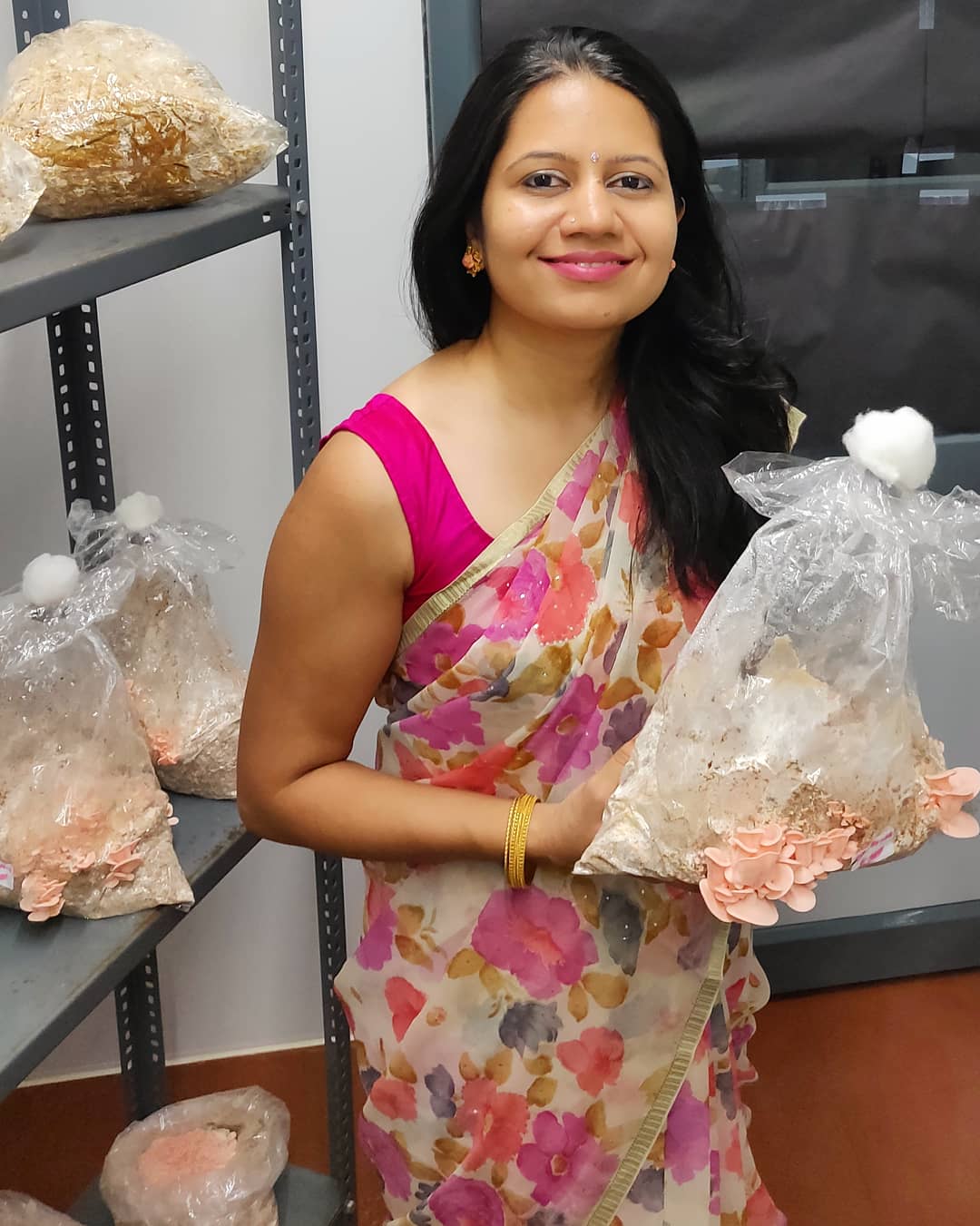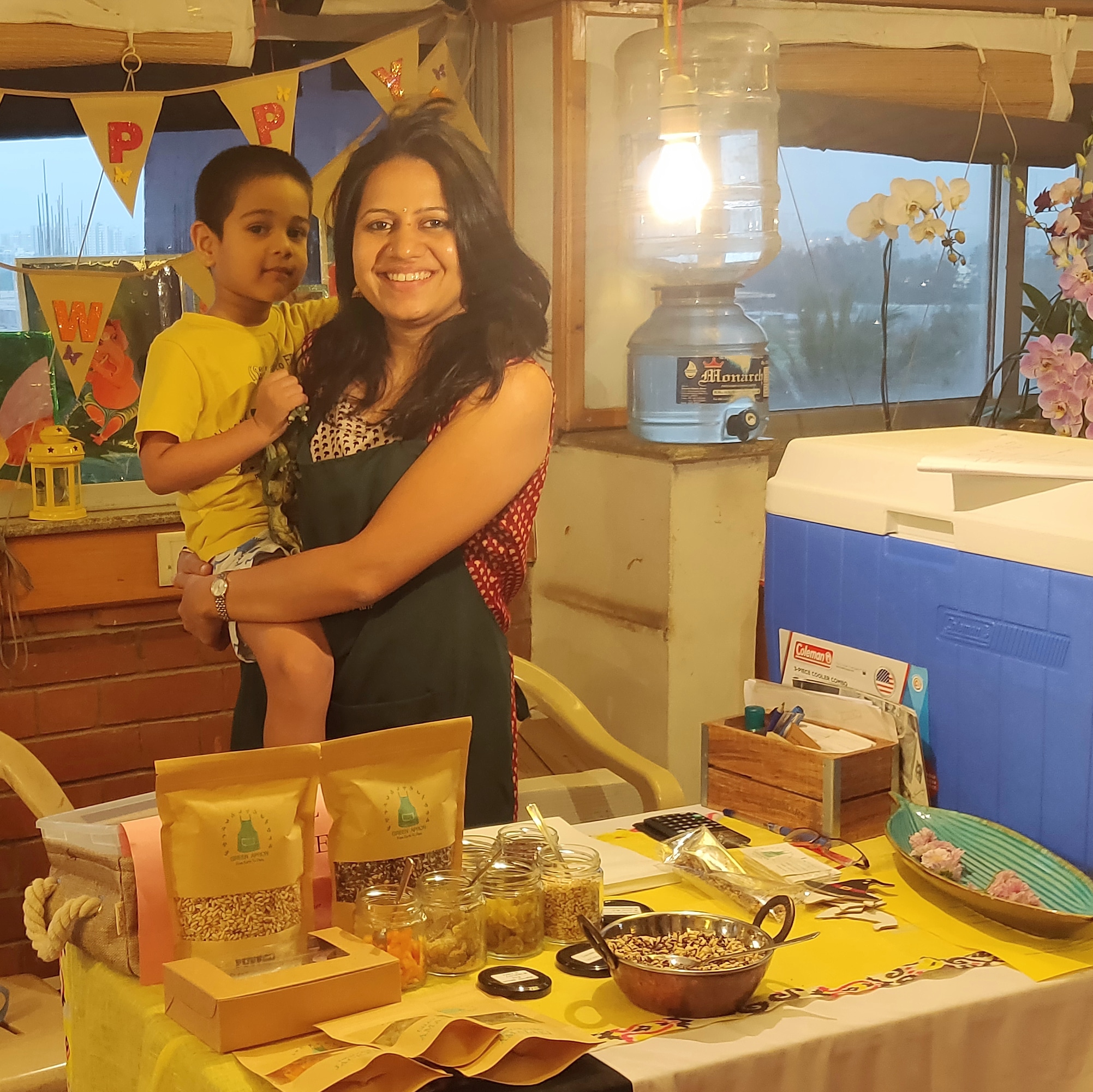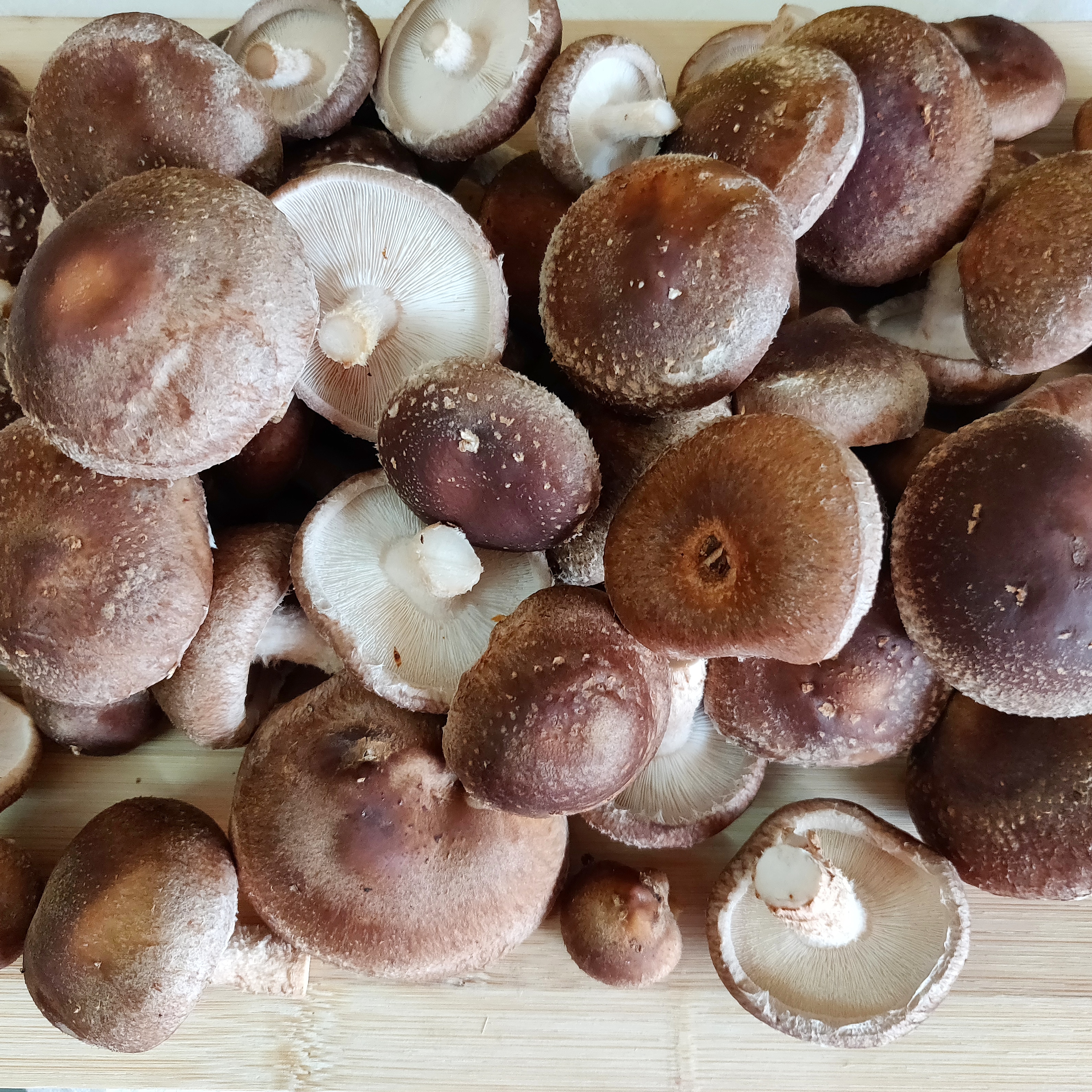Oyster to Shiitake: B'luru Woman Grows Mushrooms on her 10x10 Terrace! (thebetterindia.com)
It is nutritious, a rich source of protein for vegetarians, high in selenium for cell-repair, contains antioxidants that can fight cancer, is a natural source of Vitamin D and fits in all kinds of fad diets–vegan, paleo and even keto.
It doesn’t take up much space (can be grown vertically), uses less water and energy than other crops, and above all–grows on agricultural waste.
If these aren’t good enough reasons to grow and eat mushrooms, what else could be?
What if I told you that you could successfully grow them on your terrace without expensive, imported packets doused in chemicals?

Well, Bengaluru-based Namrata Goenka, a former lawyer, does just that in 10×10 feet space on her terrace. The Better India got in touch with her to help our readers get a few tips on growing mushrooms at home.
A little about Namrata
Born in Kolkata, she moved to Bengaluru at the age of 18 to complete her education. She pursued bachelors in biotechnology and masters in Biochemistry.
After getting married, she studied law from Delhi University and worked as a patent attorney for a while. Once the couple moved back to Bengaluru and their son, Vedant, was born in 2014, Namrata decided to devote her time and energy to raising their son.
She begins, “While raising Vedant, I had time to look after my terrace. Even though it is a small space, we grow veggies like lettuce, herbs, radish, greens, tomatoes and beans for daily consumption.”
Around this time, she decided to start a business from home. She first thought of making and selling mushroom spawn, a highly technical skill which requires some background in biosciences to extract mycelia for growing it on sterile grains. But a little market research revealed that there were several readymade spawn suppliers.
She took up a course from the Indian Institute of Horticulture Research (IIHR) on spawn cultivation. Mushroom cultivation also caught her interest, and she enrolled in a course.

So what is mushroom spawn?
To put it simply, mushroom spawn is any substance that has been inoculated (immunised) with mycelium, the vegetative growth on which mushrooms grow. Mycelium, a thread-like collection of cells, is to a mushroom as an apple tree is to an apple. The spawn is used to transfer mycelium on to any material from which mushrooms will grow, called a substrate.
So Namrata decided to take spawn from IIHR and start cultivation in April 2018. She began with shiitake mushrooms which grow in about four months.
“It was a constant process of trial-and-error. Remember that mushroom cultivation requires skill, but most importantly, a lot of batches. There were two failed batches, but two successes too.”
She first started on a small scale to enhance her skills and check the market. Having her own home and terrace reduced the costs, and much of the equipment was bought from a mushroom unit that was shutting down.

She informs, “Setting up a unit can be cost-effective based on the budget of the mushroom grower. Besides, how different types of mushrooms are grown also varies. But a low-cost structure is very much possible.”
The process of growing
You need different rooms to grow mushrooms. Once you get a ready-made spawn, you need one room to make the substrate, another to sterilise it and run the spawn, while a third for fruiting.
Since the spawn is ready, the next step is to create a substrate. As mentioned above, substrate is simply any substance on which mycelium will grow. Many kinds of biomass can be considered a substrate. From paddy straw to coffee grounds, even sawdust, you can choose your variety.
Another important step before filling your bag with the substrate is sterilisation. While several farmers turn to chemicals for sterilisation since it takes less time and input, Namrata prefers using a pressure cooker to complete the process without using any chemicals.
The next step is the spawn run. This is the process of letting the mycelium grow on the substrate. Once little mushrooms, also known as ‘primordia’ appear, they are transferred to the fruiting room. The spawn-run time varies for different types of mushrooms. The room has to be dark for the purpose.
The fruiting room, on the other hand, requires a bit of an investment where you have to manually control the humidity, temperature, light, and aeration, to facilitate the growth of the mushrooms.
There are pocket-friendly ways of maintaining humidity and temperature. While some farmers water the floor, others use wet gunny bags on the wall to bring down the temperature a few notches.
In Bengaluru, since the weather is cooler than most Indian cities, Namrata adds how winter and monsoon are the best time to grow mushrooms.

“Growing oyster mushrooms is cheaper than shiitake. They grow well in summers too and require less time to yield.”
Namrata currently grows 100 bags of mushrooms, with each kilo of substrate yielding 200-400 gm of mushrooms.
As against the regular button mushrooms in the market, she grows elm oyster, pink oyster, and shiitake mushrooms. She grew king oyster in the past, but those require relatively lower temperatures.
When asked if mushrooms have market potential, she adds, “They have a huge potential. People are unaware of the vast varieties and their nutritive value. There are varieties that most of us have never seen or tasted before, which can be grown in India without relying on imported packages.”
She started Green Apron from home with a database of customers who order her produce through Dunzo, a local delivery service. She is now working on daily produce to extend her scale of operations and reach out to restaurants.
You May Also Like: At 91, This Army Veteran Turned to Mushroom Farming. The Reason Will Move You!
Drying fruits and sustaining mushrooms
To sustain her mushroom business, she also dries fruits like jackfruit and amla. The income from these also helps her set up stalls at exhibitions, farmers markets, and flea markets.
“Jackfruit is native to India, drought-resistant and healthy. But it is unfortunate that much of it goes to waste or rots away. It is a bulky fruit that requires a lot of effort to cut, clean and consume, where each fruit has close to 200 bulbs. So I decided to pick it and amla for drying, and provide healthy snacking options.”
She also collaborates with farmers from Bengal for products like black rice and date palm jaggery.
When she was undertaking mushroom cultivation, she was dissuaded by many who had failed at producing it profitably. But she did not give up.
“I have a good batch growing. I have faith in the potential of mushrooms and their profitability. I reach out to the consumers directly and have created a loyal base. It is also important to create awareness and break myths.”

She emphasises how whether she is selling mushrooms at exhibitions or not, she discusses them with people.
“Many people think mushrooms are non-vegetarian or poisonous. So I break these myths. Others struggle with recipes to cook them right. So I give them tips and recipes too!”
We hope this warrior continues her mushroom cultivation with vigour!
Have queries about growing mushrooms? Reach out to Namrata Goenka at info@greenapron.in. Check out her Facebook and Instagram pages.
Comments